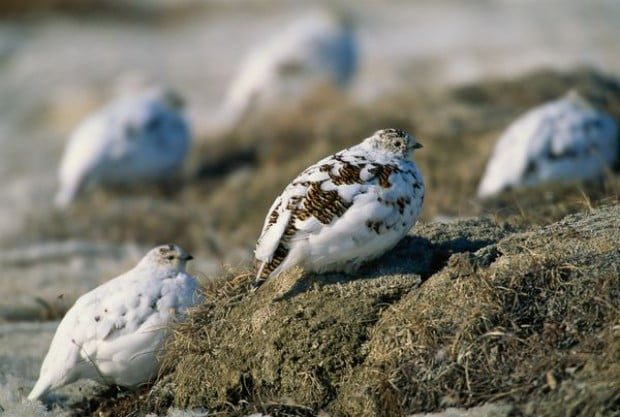
Autumn brings splendid colors to trees and shrubs throughout the West, and it’s a time when we are reminded of magnificent grouse and ptarmigans (pronounced tar-mi-guns) that live in our woods.
Essentially, grouse and ptarmigans are wild chicken-like critters that can fly. There are five species of grouse and three species of alpine ptarmigans that live throughout the West. Some grouse
seasonally migrate. Only when food supply is very limited do ptarmigans leave the high treeless peaks. All grouse and ptarmigans are permanent residents of the West.
These chicken-like birds are abundant and a critical food source for carnivores such as cougars, bobcats, lynx, martens, fishers, foxes and raptors. They were traditionally a very important source of food for the Native Americans of the West. Grouse are a favorite of autumn hunters.
They lack leg spurs like other wild chicken species. But they are very well adapted to living in the snow country. In autumn they prepare themselves for winter by growing a series of closely in-line projections called pectinations on both sides of all toes. These function as small snowshoes and allow the birds to walk on top of snow. The projections shed in the springtime.
Grouse and ptarmigan bodies are perfectly designed to feed on low energy, high volume winter foods of twigs and tree buds. The birds have large crops (pouches in their mouths) and gizzards that enable holding vast quantities of food. They eat small pebbles to ease the mechanical break-up of food. In addition, they have long intestines filled with microbes to assist them in digesting wood.
Ptarmigans have a neat and narrow tail; grouse have a wider tail. Ptarmigans have white feathers on their lower legs at all times of the year, grouse do not. Both birds blend perfectly into their respective environments. Grouse live in the forest, usually alone, and ptarmigans live in gregarious flocks in the mountain treeless zone or alpine. In the autumn ptarmigans feathers change from brown to snow white.
Both birds burrow into the snow and make temporary igloos.
Occasionally in spring a cold snap after a thaw will trap the birds in the snow, making them easy prey for predators. I have unsuspectingly skied over a flock of buried ptarmigans and looked back to see a dozen heads popping out of the snow.
Grouse and ptarmigans are clever. When an enemy approaches a grouse they emit little whistles that echo around them making it very difficult to pinpoint the bird’s location from its sound. Meanwhile, they crouch low to the ground and powerfully strut away using excellent eyesight to survey their surroundings.
If a predator gets too close they explode into action by fanning their wings and racing away. The sudden burst of noise startles the enemy, and any unsuspecting person walking in the woods.
These well-adapted permanent residences demonstrate the wonderfully diverse life within our western forests and mountains.